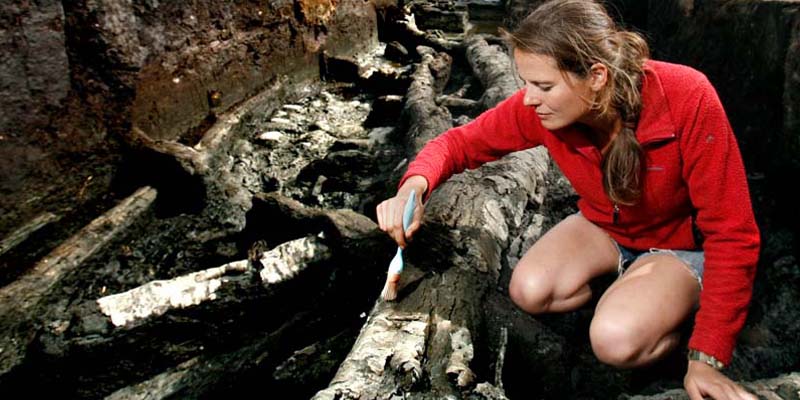The issue
The peat-filled depths of Star Carr, one of the most important Mesolithic sites in Europe, have revealed a host of sensational archaeological finds. But in recent decades the peat has dried out and become extremely acidic, causing the rare organic archaeological remains located at the site to seriously deteriorate. A consultation involving organisations such as Natural England and the RSPB concluded that Star Carr was at risk and what remained should be preserved 'by record' through further excavation.
Star Carr was first excavated in the 1940s and again in the 1980s; it became internationally renowned in the archaeological world. Depsite this, there was a lack of public awareness of Star Carr and the Mesolithic, and there had been little attempt to present this period of prehistory within UK heritage tourism. Local surveys showed only eight per cent of people had heard of Star Carr.
The research
Under the guidance of Professor Nicky Milner, archaeologists from York, working with a team from the universities of Manchester and Chester, excavated the site in order to establish the value of the remaining artefacts and structures.
The site was revealed to be much larger than imagined. Researchers uncovered the earliest known ‘house’ in Britain, while an extensive platform of worked wood demonstrated the earliest evidence of carpentry in Europe. This created a significant shift in perceptions of the Mesolithic period. The Mesolithic people were thought to have lived in small, nomadic groups, but the finds from Star Carr provided evidence that Mesolithic people created large settlements and were capable of building structures. This challenged previously held beliefs about the way hunter-gatherers lived.
The team developed a range of engagement activities to generate public and media interest into Star Carr and the Mesolithic
By locating, cataloging and photographing as much of the material as possible from the site, the researchers created a "virtual museum archive" for the public and researchers.
A partnership between Science City York, the Yorkshire Museum and the Star Carr team produced a creative exhibition showcasing the Mesolithic titled Artists in the Archives. Continuing this partnership, research at Star Carr underpinned the Yorkshire Museum's After the Ice exhibition. The exhibition used multimedia to bring the research to life and immerse visitors in the Mesolithic landscape.
The outcome
As a direct result of the research, Star Carr was granted Scheduled Monument status and added to English Heritage’s Heritage At Risk Register, giving official recognition of the site's importance. Scheduling gives the site a legal form of protection. Star Carr has been used as a model for the national and international importance and vulnerability of wetland heritage in the National Heritage Protection Plan, prompting further funding for other wetland projects.
Star Carr generated unprecedented public and media interest in Mesolithic archaeology - locally, nationally and internationally. Professor Milner has been interviewed for over 30 television and radio news broadcasts and contributed to over 100 media outlets around the world. UK news coverage of "the oldest house in Britain" was estimated by the BBC to have reached between 12 and 14 million people.
A survey of After the Ice attendees found that 96 per cent were more informed about Star Carr because of the exhibition, and 81 per cent would recommend it. The exhibition prompted 43 per cent of visitors to learn more about Star Carr.
After the Ice also had an economic impact, as it drew visitors to the museum and the Yorkshire region: 29 per cent of visitors came to the museum because they were particularly interested in prehistory or Star Carr.

